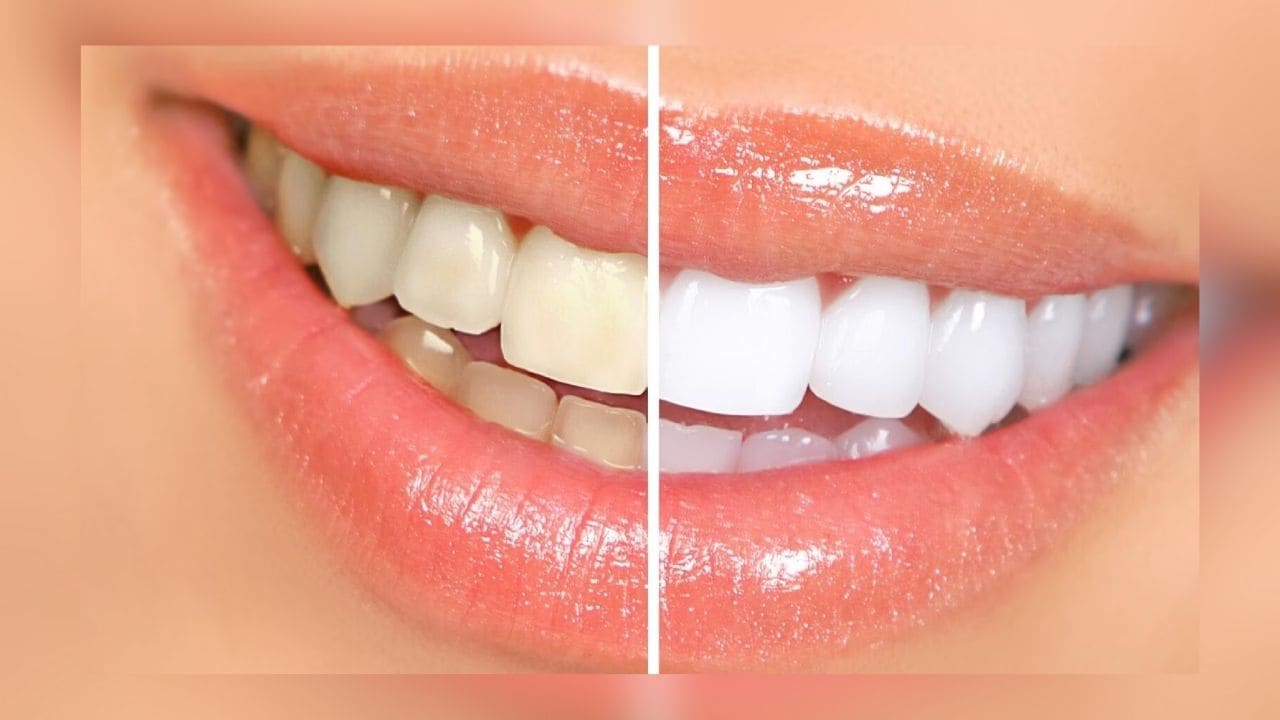
Teeth can appear yellow for a variety of reasons, but many methods can slow and potentially reverse the process. Tips range from avoiding certain foods to brushing your teeth with baking soda and hydrogen peroxide from time to time.

Teeth whitening kits are readily available at most pharmacies, but many natural remedies can also help remove stains and protect tooth enamel.
How to Whiten Teeth Naturally
The following strategies can help whiten your teeth:
1. Change your diet
Avoiding foods that stain your teeth can help prevent further discoloration. Foods and drinks that contain tannins, such as wine and tea, can stain your teeth. Coffee, strong soda, and juices can also cause stains.
Acidic foods attack tooth enamel and can cause your teeth to turn yellow. People concerned about the color of their teeth should avoid excessive consumption of citrus fruits, coffee, and carbonated drinks. Alternatively, you should always brush your teeth after dental treatment.
Dentists usually recommend waiting at least 30 minutes after eating before brushing your teeth. Acid can weaken tooth enamel, so brushing your teeth too soon can cause damage.
You can reduce your risk of nicotine staining by quitting smoking and tobacco use. It can also prevent tooth decay and periodontal disease, which can damage tooth enamel and cause oral health problems.
2. Try Oil Pulling
Oil pulling is the act of washing your mouth with oil to remove dirt, germs, and debris. Although this is not a replacement for regular brushing and flossing, some studies suggest that rinsing your mouth with certain oils can help whiten your teeth. The American Dental Association (ADA) considers oil pulling to be an unconventional dental treatment and states that there is credible evidence that oil pulling reduces cavities, whitens teeth, and improves oral health and well-being.
However, this method is not recommended. Let’s try it. After brushing your teeth, rinse your mouth with the oil for about 20 minutes, then spit it out.
The following oils are suitable for oil pulling.
- Coconut oil
- Sunflower oil
- Sesame oil
3. Brush your teeth with baking soda
Baking soda gently removes stains from the surface of your teeth. Some people worry that baking soda is too harsh and can wear down tooth enamel, but a 2017 study found that baking soda is a safe way to remove stains. .
Baking soda may also help fight bacteria, and it has been suggested that it can reduce plaque and prevent cavities.
4. How to use hydrogen peroxide
Hydrogen peroxide is a mild bleaching agent that helps whiten discolored teeth. For optimal whitening results, try brushing your teeth for 1 to 2 minutes twice a day for a week using a mixture of baking soda and hydrogen peroxide. Do this only occasionally.
Hydrogen peroxide can increase tooth sensitivity and is not suitable for long-term use or for people who already have tooth sensitivity.
5. Fruit Whitening
Papain and bromelain, enzymes found in papaya and pineapple respectively, both contribute to teeth whitening.
A 2020 study found that teeth whitening gels containing bromelain or papain have significant clinical potential for teeth whitening.
However, further studies are needed to determine whether these enzymes are effective. The ADA recommends that you don’t rub fruit pieces directly on your teeth, as the acids in the fruit can actually worsen the color of your teeth.
6. Chew Fiber-Rich Foods
Chewing certain fiber-rich vegetables and legumes can help neutralize acids in your mouth and protect tooth enamel.
Leafy green vegetables such as beans and spinach help produce more saliva in your mouth, which helps cleanse the acid in your mouth.
